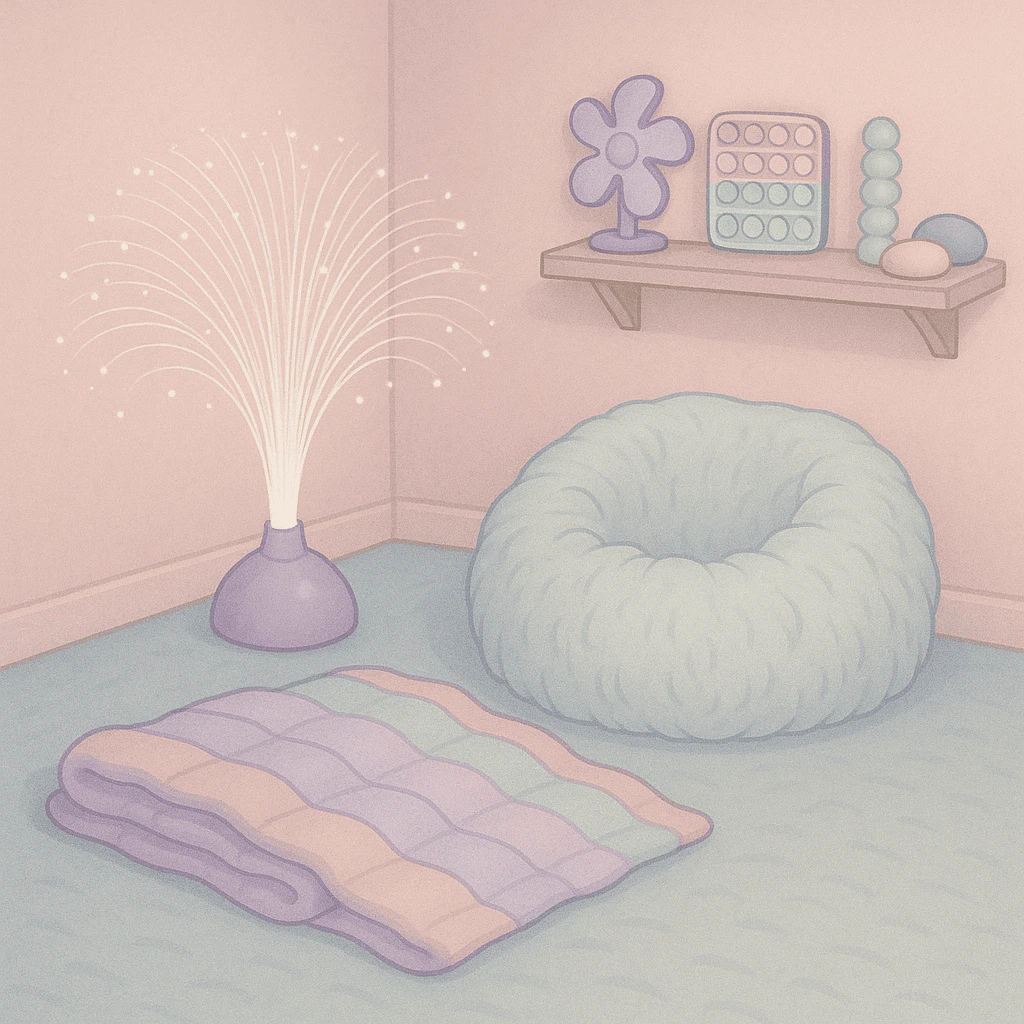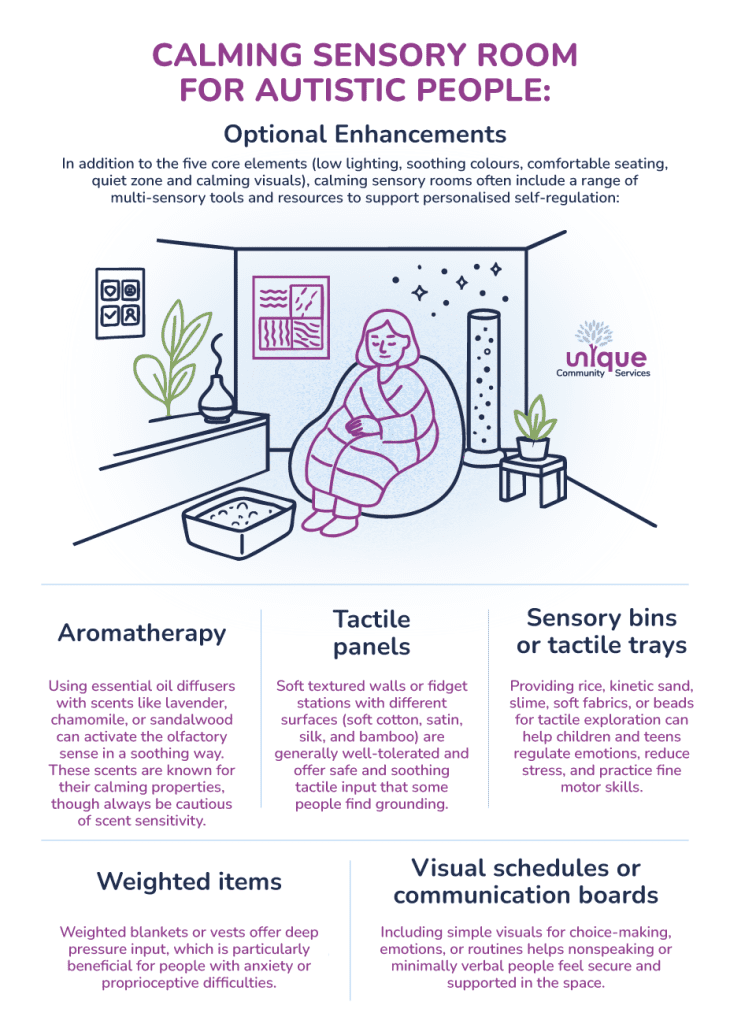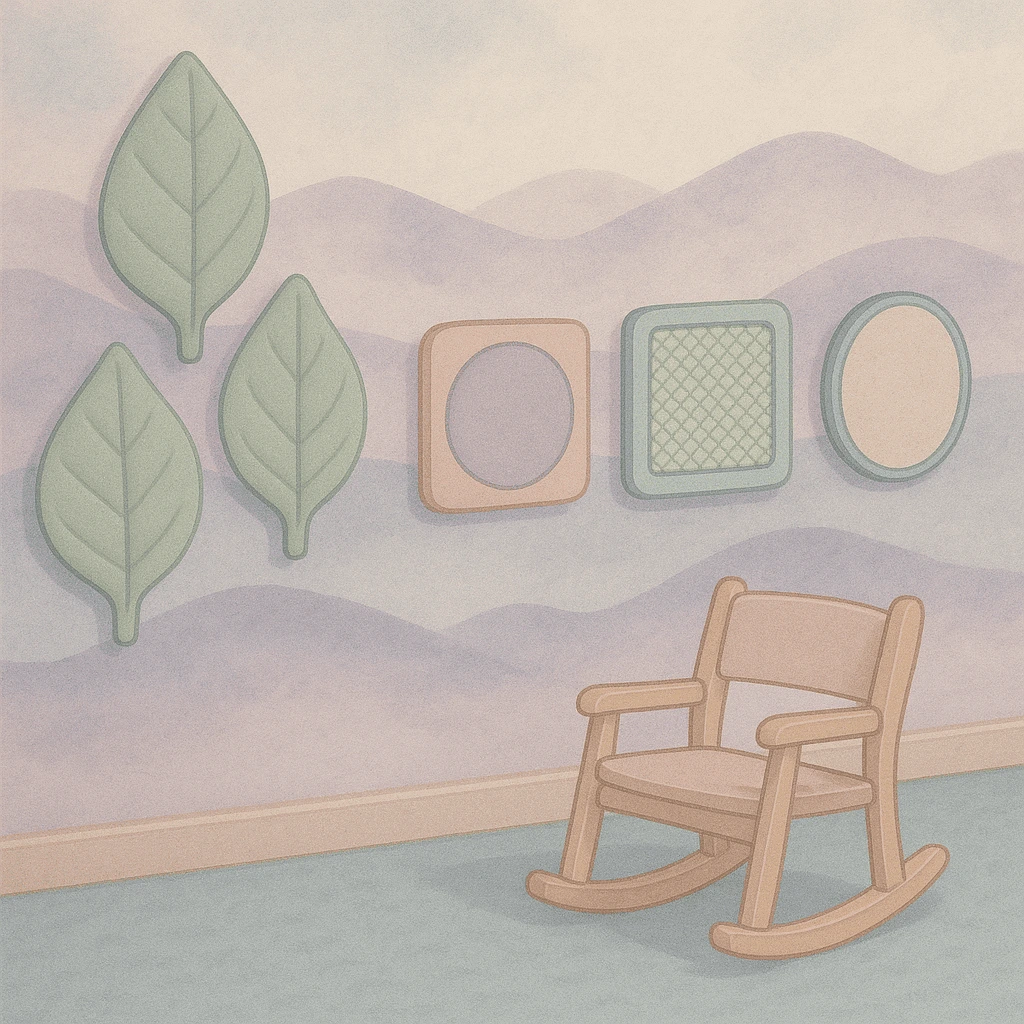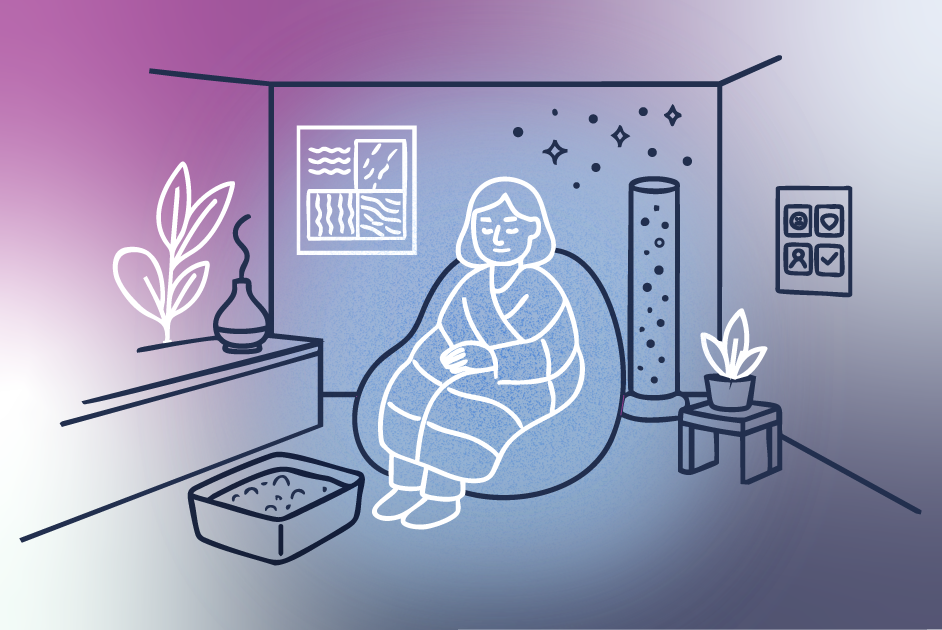Sensory Sensitivities and Autism
Sensory sensitivities in autistic people are the heightened response to sensory stimuli (bright lights, loud noises, smells or certain textures). Neurodivergent people may experience hypersensitivity (strong reactions to sensory input) or hyposensitivity (delayed response to sensory input). To regulate their own emotions and feel grounded, autistic people may crave certain sensations, known as sensory seeking. In some cultures, heightened sensory perception is seen as heightened sensitivity or awareness, sometimes even associated with creativity or spiritual giftedness.
Many autistic people describe profound, meaningful sensory experiences connecting with music, nature, or colour – experiences that are enhanced by sensory differences, not diminished. Therefore, autism is a neurodevelopmental difference, and sensory differences are believed to originate in the neurological processing of sensory information. Sensory sensitivities can arise from:
- Neurological basis – the brain may process sensory input more intensely or more weakly. Functional MRI studies show differences in the connectivity and activity of brain regions involved in sensory perception and integration (e.g., thalamus, sensory cortices).
- Early development – The most often emergence happens in infancy or early childhood. Infants may show distress during nappy changing or bathing, or fail to respond to loud sounds or name-calling. These early responses often lead to further diagnostic evaluation for autism.
- Genetic and environmental influence – Genetics play a strong role in autism and likely influence how sensory systems develop. However, sensory differences are not caused by trauma or parenting, though environmental stress can deteriorate how these sensitivities are expressed.
Coping Mechanisms
Sensory sensitivities can cause sensory overload, and autistic people may resort to their coping mechanisms, including sensory tools, that allow them to feel less stressed and more in tune with their bodies, such as:
- Autistic stimming is a self-stimulatory behaviour that helps regulate sensory input.
- Sensory diet, noise-cancelling headphones, weighted blankets, and calm environments that support daily functioning.
Occupational therapists often help design sensory support plans according to each person’s sensory preferences for home, school and work.
Read more about the role of occupational therapy in autism.
Key Elements of a Calming Sensory Room
Before we discuss more about the elements that make a sensory room calming and safe for an autistic person, let us discuss briefly what a calming sensory room is.
A calming sensory room or sensory integration room is a specially designed space that offers a gentle, low-stimulus environment to help autistic people self-regulate, relax, and feel safe. They can facilitate sensory integration therapy by providing a controlled environment. The key elements are carefully chosen to reduce sensory overload and provide soothing input that supports emotional and sensory needs.

Here are the key elements and why they matter:
Low Lighting
Low lighting is a foundational element in any calming sensory room because many autistic people experience light sensitivity and are hypersensitive to bright, flickering, or unnatural lighting. Overhead fluorescent lights, standard in schools and hospitals, can be overwhelming, even painful, for some people due to their intensity and flicker rate.
A calming sensory space replaces these with:
- Dimmable lights
- Soft lamps, soft LED or fibre optic lighting
- Lava lamps or bubble tubes
- Natural light with blackout options
- Star projectors
🌙Purpose: Reduces visual overstimulation and creates a calm atmosphere.
🌙Why it helps: Harsh lights can trigger sensory overload, while soft lighting calms the nervous system and creates a sense of safety.
Soothing Colours
The colour palette sets the emotional tone of the space in the room. Bright, highly saturated colours like reds or neons can cause agitation or distraction in visually sensitive people. Instead, sensory rooms are designed with soft, soothing colours that mimic nature and promote emotional regulation. Colour choices, along with various sensory wall ideas, should be purposeful for the psychological and sensory impact on the person, not for aesthetics.
The colour palette should involve cool tones, such as:
- Soft pastels (lavender, sage green, pale blue)
- Nature-inspired tones (sky blue, moss green, sand, taupe)
- Muted tones
🎨Purpose: Influences mood and emotional regulation.
🎨Why it helps: Calming colours reduce anxiety and promote relaxation. Colour psychology shows that cool tones can help with focus and calmness. These colours work harmoniously with natural materials (wood, cotton, linen) to reduce visual clutter and create a cohesive, peaceful environment.
Comfortable Seating
Many autistic people experience challenges with proprioception (awareness of where their body is in space), so seating that provides deep pressure and clear physical boundaries can be incredibly soothing. Comfortable, adaptable seating options are integral to helping people feel secure and physically regulated. Providing various seating options respects individual preferences and supports a range of regulation needs, from quiet rest to gentle movement.
Seating options include:
- Bean bags or floor cushions
- Beanbag chairs or rocking chairs
- Hammock chairs or nest swings
- Soft rugs or padded mats
- Weighted lap pads or weighted blankets
☁️Purpose: Provides physical comfort and grounding.
☁️Why it helps: Deep pressure and soft textures give proprioceptive input, helping with sensory regulation and body awareness.
Quiet Zone
Noise sensitivity is one of the most common and intense sensory challenges reported by autistic people with sensory processing disorder. Even everyday background sounds like buzzing appliances, footsteps, or conversations can feel intrusive and unbearable. A well-designed sensory room offers a controlled sensory-focused environment with a designated quiet zone where sound is softened.
A quiet zone space should involve:
- Acoustic panels or foam tiles, using soft furnishings to absorb ambient noise, and isolating the space from high-traffic or echo-prone areas.
- White noise machines
- Nature soundscapes (waves, birdsong, rainfall) offer predictable, gentle auditory input that can help mask intrusive noise.
- Noise-cancelling headphones
🧘♀️Purpose: Minimises auditory distractions and offers a safe retreat.
🧘♀️Why it helps: To create a space where a person can retreat without overstimulation, allowing for emotional decompression and recovery from sensory overload.
Calming Visuals
Visual stimuli in a sensory room should be carefully curated to be engaging yet non-intrusive. The movement of light, colour, or form should be slow, rhythmic, and repetitive, aligning with the person’s sensory threshold. Calming visuals won’t overload the visual field, unlike busy murals or posters, making it easier for autistic people to find their very own sensory space. Instead, they should invite moments of mindfulness, curiosity, or even meditative focus, helping the person to centre their attention and relax.
Calming visuals can take the form of:
- Moving projections (clouds drifting, fish swimming, stars twinkling)
- Bubble walls
- Fibre optic curtains
- Minimalist nature-inspired wall art
- Lava lamps
- Bubble tubes (with gentle colour changes)
🌿Purpose: Offers gentle visual stimulation or focus to aid regulation and provide calming sensory input.
🌿Why it helps: Gentle, repetitive visuals provide soothing feedback and can help with anxiety or overstimulation.


Designing a Sensory Room
Designing a sensory room is a highly personalised process that focuses on creating a space where autistic people (or those with sensory processing differences) can feel safe, regulated, and engaged. A well-designed sensory room addresses individual sensory needs, includes purposeful zoning, and carefully considers sensory activities, sensory toys, flooring, lighting, sound, and types of stimulation.
Below is a detailed, structured guide to designing a calming and functional sensory room:
Identify Sensory Needs
Before designing a sensory room, the first step is understanding the unique sensory profile of the person using it. Each person will have different sensitivities and preferences, and while some may seek certain types of input, others may avoid it.
Steps:
- Use sensory profiles or assessments (e.g. from an occupational therapist).
- Identify whether the person is hypersensitive (over-responsive) or hyposensitive (under-responsive) to stimuli like sound, light, touch, or movement.
- Involve the person (where possible), family members, and the support workers in its co-design.
- Take note of what helps the person self-regulate: stimming, quiet time, tactile play, visual focus, etc.
Create Different Zones
A sensory room works best when divided into purpose-built zones supporting different sensory functions. Zoning helps autistic people make choices based on how they feel and what they need.
Suggested Zones:
| Zone Type | Purpose | Example Features |
|---|---|---|
| Calming Zone | Reduce stimulation and support relaxation | Bean bags, soft lighting, calming visuals, white noise |
| Movement Zone | Encourage vestibular/proprioceptive input | Therapy balls, balance boards, swings, mini-trampolines |
| Tactile Zone | Stimulate touch exploration | Tactile walls, sensory bins with rice, sand, foam, textured mats |
| Visual Zone | Provide gentle visual focus | Bubble tubes, fibre optic lights, projections, lava lamps |
| Auditory Zone | Controlled sound interaction | Musical instruments, sound panels, and nature sounds |
| Task/Focus Zone | Help with calm engagement or education | Desk, visual schedules, fidget tools, soft task lighting |
📌 Tip: Use soft dividers, curtains, or rugs to define these zones without isolating or overstimulating the person.


Sensory Room Flooring
The flooring of a sensory room must balance comfort, safety, and sensory feedback.
Options & Benefits:
- Padded foam flooring or gym mats: Ideal for movement and safety.
- Carpet tiles: Soft underfoot, suitable for quiet zones, and easy to clean.
- Textured rugs or mats: Offer tactile variation for barefoot exploration.
- Non-slip vinyl: Easy to clean in messy or active zones, but may need rugs for softness.
📌 Tip: Choose flooring that can be cleaned easily and still supports crawling, stretching, or floor-based play.
Here you can explore sensory ideas for autistic children.
Lighting and Sound
These two elements, lighting and sound, are most needed for controlling stimulation and setting the emotional tone of the room.
Lighting:
- Use adjustable, low-level lighting like dimmable LEDs or fibre optic lights.
- Avoid flickering fluorescents.
- Use soft glows, projection lights, or bubble lamps in visual zones.
- Provide natural light where possible, with blackout curtains to control brightness.
Sound:
- Use acoustic panels, curtains, or foam tiles to reduce echo and harsh noise.
- Introduce white noise machines, soft instrumental music, or nature sounds in calming zones.
- Include noise-cancelling headphones or ear defenders as options.
📌 Tip: Ensure sound and light levels are easily adjustable so the person can control their environment, enhancing autonomy.
Stimulation: Multi-Sensory but Controlled
The aim of creating a sensory room is not to overwhelm with stimulation, but to offer it in controlled, optional ways that encourage the autistic person to explore and self-regulate.
Multi-Sensory Features:
- Visual: Sensory projector
- Tactile: Sensory ball
- Proprioceptive: Weighted blanket
- Vestibular: Rocking chair
- Auditory: Rainmakers or a calming music playlist
- Olfactory: Essential oil diffusers with calming scents (if not aversive)
📌 Tip: Store stimulating equipment in labelled boxes or drawers so the person can choose what to engage with and when.
Benefits of a Calming Sensory Room
When the space is designed with the autistic person’s safety as a priority, it offers opportunities for personal choice in the room’s design with sensory equipment, remains flexible to meet evolving needs, and is carefully assessed, everything begins to align. As a result, daily life improves significantly, and the positive impact becomes both evident and lasting.
The Benefits of A Calming Sensory Room:
- Reduces anxiety and overwhelm – The low-stimulation environment helps the nervous system down-regulate, easing feelings of anxiety, frustration, or meltdown.
- Provides emotional regulation support – Through gentle, structured sensory input, calming rooms help people better recognise and manage their emotions.
- Focus improvement and learning readiness – Time in a calming sensory space can help a person reset. After calming down, they’re more likely to be receptive to learning, attentive, and able to engage with others or complete tasks.
- Encourages self-awareness – With the right setup, a sensory room can teach a person to recognise their sensory needs and self-direct their regulation, whether through choosing calming visuals or lying under a weighted blanket.
- Promotes rest, sleep and recovery – The soothing features of a calming sensory room can help prepare the mind and body for rest or sleep, especially for autistic people who struggle with nighttime routines or overstimulation in the evening.
- Reduces incidents of distress and meltdown – By offering proactive sensory regulation opportunities, sensory rooms lessen the frequency and intensity of meltdowns or shutdowns. People can de-escalate before their stress reaches a critical level.
- Enhances quality of life – Above all, sensory rooms enhance comfort, dignity, and the experience of everyday life. When people feel calm, safe, and understood in their environment, their confidence and quality of life improve.
Creating Inclusive Places
We weave the spirit of sensory inclusivity into every aspect of our care, ensuring that the people we support feel calm, safe, and heard in the spaces they call home. Our dedicated support workers work closely with autistic people, ensuring they feel safe, understood, and supported while visiting sensory-friendly spaces in the community. Whether it’s a quiet room at the library, a multi-sensory centre, or a calm corner in a public venue, the support to enjoy their surroundings and spend meaningful time in places designed with their needs in mind is central to us.
Everyone we support has a unique story. Today, we invite you to discover William’s care journey. One that may truly resonate with you.
To require autistic support, please make a referral here.
See all our services.
Offices: Manchester and Leeds.
-Deeply committed to creating inclusive environments where every autistic person’s unique sensory needs are recognised, respected, and supported with dignity and care.-




